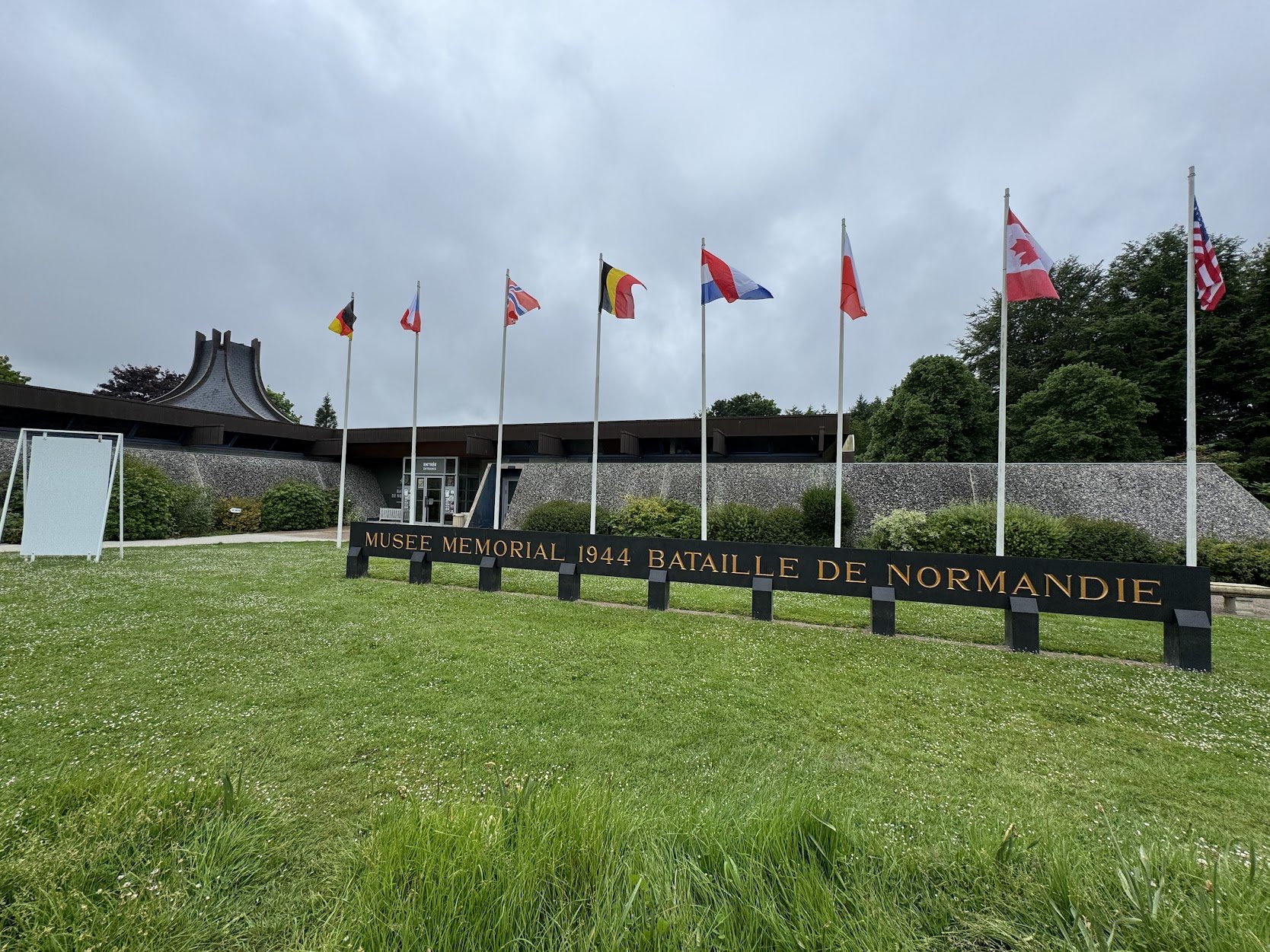Bayeux: Discovering Normandy’s Hidden Gem
France is home to countless charming towns, each with its unique allure. For those with an interest in WWII history, Bayeux, located about four hours from Paris by car, is an excellent destination. It serves as a perfect base for exploring the historic beaches of Normandy. However, Bayeux's rich history extends far beyond WWII, with stories spanning many centuries. In this post, we share our experiences from a recent five-day stay in Bayeux, hoping to inspire your visit. Plus, we have a recommendation for the most charming hotel in town!
One way to get to know the city is to take a walking tour. We started off our first morning with a tour from the center for town. We learned so much that we can share here.
Bayeux’s history dates back to the Romans, although it does have Celtic origins probably dating earlier. The Aure river flows through the town. But because there were no direct outlets to the ocean for trade, Bayeux’s neighboring Caen became a much larger city over the years. Nonetheless, Bayeux has many interesting events that have cemented it’s place in world history.
The Bayeux Cathedral seems overwhelmingly large for this small town. The Cathedral was built for William the Conqueror, later known as William, the Duke of Bayeux, in 1077.
The tower was added later in the 15th Century. Notice how the French, Great Britain and US flags all fly on the cathedral tower. There is a great deal of respect in the Normandy region for the allies and all they did to support France in WWII.
The inside of the Cathedral is very beautiful. At the time of our visit, we noticed there were very brilliant stained glass windows and others looking old an faded. The brilliant windows seen below are part of an ongoing restoration project. The glass used was actually developed by NASA.
Outside the Cathedral sits a beautiful tree. What’s so special about it? It is called the “Liberty Tree,” planted to celebrate the end of the French Revolution. Meaning this tree, in the middle town is over 225 years old, surviving through many historic events including German occupation in WWII.
There are 3 very nice museums in Bayeux. This makes sense as there is so much history in this area. However, Bayeux can be chilly and rainy so it’s nice to spend time in a warm museum.
The Bayeux Tapestry Museum
This is probably the most famous of the museums for one reason: it holds a 230 ft long 700 year old tapestry. Though the exact timing of the tapestry is not known, it is believed to have been made in England, for William the Duke of Normandy. It depicts the events leading up to the the conquest of William of the Normandy region in 1066.
No photos allowed; but make time to see this piece of history.
I wish we could share pictures, but there is no photography allowed. There are 58 scenes depicting the events of 1066. Along with your tour, an audio guide is provided to help tell the fascinating story.
For more about this fascinating museum see their website: HERE
Photo credit: Wikipedia
Musee d’Arte D’Historie Baron Gerard
This small, but a very impressive museum, sits right down from the Cathedral. It holds hundred of pieces of local and world art and artifacts. We had no plans to visit the MAHB, but we are so glad we took the time.
There are 14 rooms that take you chronologically though their history. But history exists right on the site of the museum itself. When it was under renovation in the 2000’s artifacts dating back to the Roman times were discovered. Seeing some of these ancient Roman stones set against the modern update of the building was quite a contrast.
We learned that Bayeux is also known for it’s fine lace. In fact, in the mid-1800’s there were over 15,000 workers creating the finest lace all by hand, using a bobbin system. This is where “Chantilly Lace” was originated. Although the hand lace industry collapsed in the 1900’s, hundreds of examples of these beautiful craft are displayed in the museum.
Bayeux was also once famous for it’s fine porcelain. Over the course of just under 150 years, three different “houses” or families each produced some of the finest porcelain ever made. Each house had their own unique colors and style with the “Gosse” being the most notable with the apple blossom in every piece.
Sadly, the porcelain industry in Bayeux came to an end in 1951 when the Morlent family failed to modernize their production, and was forced into bankruptcy. So glad they have such a wide variety of pieces here to admire.
We enjoyed our time at the MAHB learning about pieces of history we had no prior knowledge of!
Normandy Battle Memorial Museum
If you’re in Bayeux you’re most likely going to visit the beaches of Normandy. If you find yourself with some time, it’s worth a stop at the Normandy Battle Memorial Museum.
The museum is fairly small, all focused solely on the activities around D-day in June of 1944. It’s filled with dioramas and memorabilia placed in chronological order. It was interesting to see from the French perspective, in this area, the events around the liberation of France in WWII.
Just across the street from the museum sits the Commonwealth Cemetery of Great Britain. Here there are the graves of over 4,600 soldiers of WWII from Great Britain. What always strikes me when seeing a war cemetery, is the young age, many in their teens, of the soldiers.
Very moving realizing how many just in the Normandy Region gave their all in WWII.
A look across the cemetery back toward the cathedral in the center of Bayeux. A gloomy but eerily beautiful day. Another piece of Bayeux history is that it was one of two towns first liberated in June 1944. In fact, Charles de Gaulle declared Bayeux the capital of France for a short period of time in his famous June 14, 1944 speech.
If you find yourself with time in Bayeux, plan a visit to one or all of this excellent museums along with the memorial cemetery.
The center of the town of Bayeux is charming with lots of shops and restaurants. There is even a small motorized train that acts as a taxi to take tourists around.
Our visit was in late May just one week ahead of the 80th anniversary of D-day, a very important day in the Normandy region. There is a local artist, Pascal that paints caricatures in shop and restaurant windows. They all are either cute French scenes or honoring those who helped liberate France in WWII. It was fun to see!
Hotel Belle Normandy
We stayed at the most charming hotel right near the center of Bayeux. Hotel Belle Normandy is a 20th century school that has been fully renovated and updated.
The rooms were well appointed and quite modern. They are also each named for notable people that contributed to the area. We were in the Charles Letot room, who the original school was named after.
The original entrance to the school still exists, leading you through a garden to the hotel. This was also a “short-cut” into the center of town.
Clémence and Elodie were the most charming hosts to, not only us, but to all their guests. If you stay here, you too will feel their warm hospitality. They serve breakfast daily and have a cute bar where guests chat each evening. To check out their hotel click: HERE
Good Bye to Bayeux
The hotel is about a 15 minute walk to the train station, or of course you can arrange for a cab. Since we had only carry on luggage we opted to walk taking another short view of the sites of Bayeux.
So much rich history in the most charming setting in Bayeux, France. We loved our time here and, if you go, you will too!





























An adventure in Bayeux, mixing WWII history, ancient sites, and local charm